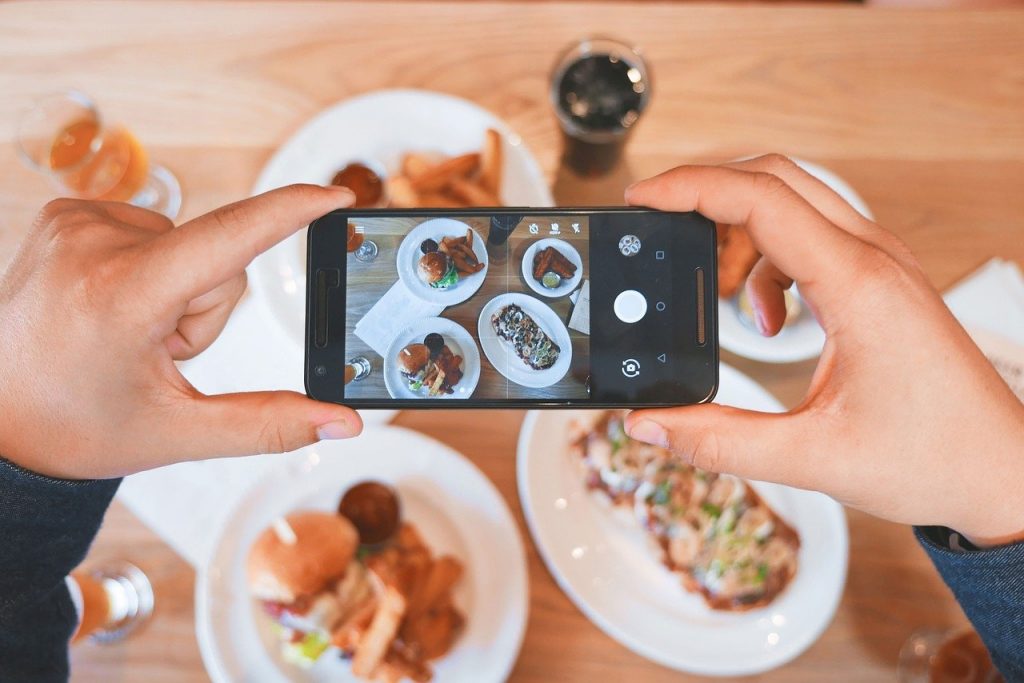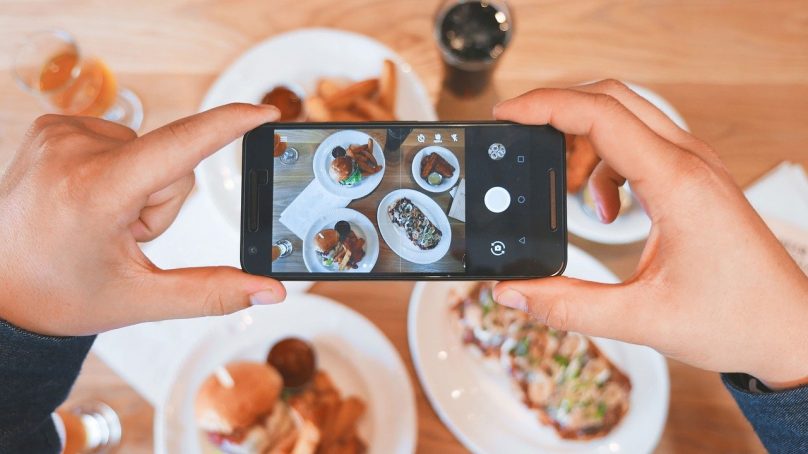
According to JLL, pre COVID-19, the global foodservice sales were growing at around 4 percent per year and this rate was expected to continue, if not increase a little further to just below 5 percent.
However, COVID-19 radically changed this momentum as global restaurant sales in 2020 are expected to be 50 percent down year on year. A recent report from McKinsey & Co. suggests that, depending on the level of virus containment and local economic policy response, foodservice sales could return to pre crisis levels in early 2021, but if the containment is not as successful as hoped, then a full recovery could take a further three years.
Fundamentals such as consumers desire for experiences or being time poor, will remain or recover quickly. Others, like the growing trend for living and working in cities, being cash rich and the amount of time spent outside of the home may be slower to recover. But fundamentally, the foodservice industry will survive, and in the longer term will thrive.
Good foodservice operators who are able to offer a quality, convenient and good value product will survive at one end of the market, while unique, experiential offerings will thrive at the other end.
In this feature, we highlight a few popping trends to keep an eye on.
The COVID-19 de facto
Significant closures across the foodservice industry have been witnessed globally. Estimates vary from market to market – the NRA for example, estimates that 15 percent of restaurants could permanently close in the US. In Europe and the Middle East, estimates of permanent closures have been talked about around 30 percent and even as high as 50 percent. This means that we will see a lot of food service space come back to the market. Much of this space will be low value, underperforming retail and leisure locations. Some of this may never revert back to being foodservice, but in reality, like in every economic downturn, shedding some of the deadwood is both inevitable and can act as a long term positive by creating a stronger and more dynamic and efficient market. In the most prime locations, where space comes back to the market, re-leasing space should be relatively straightforward as demand will be maintained. The middle ground, the “rump” of core foodservice locations on our high streets and in our shopping centres will be hit hard in the short to medium term, but could come out of this looking stronger than ever. An increase in space combined with slower expansion from the larger operators will create a medium-term oversupply of restaurant space. This will force a correction in what has been becoming an overinflated rental market. Rents are likely to adjust down and landlords will provide more favorable terms to attract the few surviving active players in the market. Expect to see capital contributions and turnover rents to attract best-in class operators.
More entrepreneurial spirit
One of the key positives that we hope to see over the next few years is an increase in the range of quality foodservice operators on our high streets and in our shopping centres. This won’t be immediate, but independent, innovative and entrepreneurial operators will be at the heart of the recovery of the industry. Existing, established foodservice brands are going to be focused on survival, for many this includes the closure of a significant number of units as they rationalize their portfolio. For the short term, their expansion plans will be limited, and this, combined with a wide availability of fully fitted restaurants on the market and with landlords needing to be more flexible on their rental terms, creates an opportunity. For the progressive landlord, who can spot opportunities and who is prepared to share risk and work in partnership, there are thousands of foodservice brands who have the skills, product and following ready to take those spaces. The food truck and street food boom of the past 5 years has created a ready pool of entrepreneurial foodservice businesses who would make great additions to the high street restaurant line up. The post pandemic landscape may well create a perfect storm for more to follow, seeing a rise in the range and style of offers and moving away from the ubiquitous foodservice brands who had started to dominate the foodservice market.
Food Halls
While it may be tough to create social distancing in food halls, this requirement cannot last forever. Food halls will continue to be successful because they are a great stepping stone for street food and food truck operators to move into bricks and mortar. Rather than having to find a quarter of half a million dollars to fit out a restaurant, new market entrants can move into a permanent location for a fraction of that cost by taking space in a food hall.
Mergers and acquisitions
With increased pressures on operators of all sizes, we anticipate mergers and acquisitions to continue across the sector. The challenges in the industry mean that investment in the sector will provide great value. As consumers look for more experience from their foodservice visits, they will naturally move away from ubiquitous brands. The total growth potential for any brand will therefore decrease. This will lead to the development of restaurant groups with multiple brands, which will still allow for economies of scale on purchasing and central staff costs but also allow for flexibility in delivery. This is less likely to be the case in the fast food sector where convenience and value are the key consumer drivers.
Trade down in terms foodservice choices
As a general rule, when there is economic difficulty then customers tend to trade down in terms of their foodservice choices, rather than cut them out altogether. So, someone who would normally use fine dining, may trade down to casual dining and someone who normally chooses casual dining may trade down to fast casual. This is why operators who are known for their value offering, such McDonald’s globally, have often maintained robust sales during economic downturns. This is something that we expect to see again post COVID-19, but given the unique and global nature of this downturn, there will be some other, less obvious impacts.
Less coffee shops
In its report, JLL expects there to be an immediate impact on the number of coffee shops that have proliferated, particularly on our commuter routes. As people commute less regularly, there won’t be a requirement from the big brands to have a store on every street corner. In city centers, formats like Starbucks pick up points could well become more commonplace. In the US, Starbucks are replacing 400 stores with 300 pickup only locations already. Conversely, some of these will be replaced by an increase of larger stores in more provincial locations, as people work from home and use their local coffee house as a work, meeting, third space.
Fine dining vs. Casual Dining
Fine Dining is likely to be the least affected in terms of its ability to operate to their usual capacity as social distancing in the front of house areas will be easier to maintain due to their low seating densities. However, due to the high proportion of Fine Dining located in cities, JLL expects a number of casualties in these areas, particularly from those located near, and supported by, office populations. Those in premium residential areas are less likely to be impacted. In Casual Dining, one of the Coronavirus impacts has been simply to bring forward challenges that were already there. Marginal sites that were breaking even or just making a small profit have been shown up for the marginal and “weak” businesses that they were. The UK in particular had seen a rash of CVA’s whereby operators like Pizza Express and Itsu had been able to reduce rents across their portfolio, even dumping underperforming units. This has continued through the pandemic.
The pressure on the Casual Dining restaurant market is a result of the “space race” of the late noughties where equity backed brands over stretched themselves in terms of their expansion, paying over the odds for rents in premium locations, or expanding into locations that would not support their concept. One way that Casual Dining operators will look to extend their menu offerings will be to create All Day Dining opportunities that fill the midmorning and afternoon shoulder periods to drive additional revenues.Fast Food will continue to trade well through an economic downturn, as people trade down and the big brands will look to increase the integration of technology into their operations in order to maintain a competitive pricing position by reducing costs and increasing throughput. There will be a higher number of casualties in the Fast Casual sector, not because it won’t remain popular, but because it is one of the least mature markets, and therefore many of these concepts are smaller businesses who simply won’t have the cash flow to survive the downturn. However, as a category, we expect it to perform well by hitting a sweet spot of consumer perception of being both good quality and good value.
Packaging material & disposables
Whilst it was one of the strongest hit environmental initiatives it is also one that operators and governments are most ready for and we expect this to come back with a bang. Operators will be battling each other to announce the best new initiative whilst landlords will be expected to enforce that their tenants adopt eco-friendly packaging strategies by eliminating single-use plastic or switching to more sustainable materials. Landlords will also need to ensure that their assets are equipped for new types of waste as separating waste and composting of organic matter becomes the norm rather than the exception. The initial hit on environmental targets was (in part) due to the urgency at the start of the pandemic, but now as the immediate crisis is over and we move into longer term recovery, evidently more and more companies are switching (back) to more sustainable operational solutions. If anything, the crisis has highlighted some serious global problems with how we live our lives. People recognize that now is a unique opportunity to reset not to the status quo but to a healthier, smarter system. The sustainability trend has been accelerated by the pandemic and all indicators suggest that this trend is only becoming more important and we could not be happier to hear that!
Robots and Drones
In our 2020 Foodservice Trends book, we looked at the rise of ‘robot chefs’ and automation in the kitchen and counter environment. The IFR (International Federation of Robotics) predicted that there would be around 630,000 robots in the worldwide foodservice industry in 2021, up from 60,000 in 2009, which is certainly a big increase. The actual number of restaurants, bars and pubs worldwide is a difficult number to get to, but it is certainly in the 10’s of millions and taken into context, the number of robots is relatively small. However, the technology was there, being upgraded, in operation and proving its value before the pandemic. Although we have not seen any specific examples or stats yet, it is safe to assume that many worldwide operators, especially in the fast food sectors, are scrutinizing this tech in even greater (and more serious) detail than 6 months ago. The repetitive and standardized nature of much fast food cooking is ideal for robotic tech and the advancement and accuracy of heat sensing equipment means that cooking even high-risk products is now a reality. The pandemic is potentially the disrupter to fully kick start the use of this tech. The use of drones (and delivery ‘bots’) for customer (and supply chain) delivery has been talked about for as many years as drones have been around. This tech has even more hurdles to climb than the operational robots for obvious security (for both the product and the drone), health and safety and expense reasons. Digital prototypes manufacturer Protolabs conducted a survey in March and April 2020, involving 325 aerospace innovators and leaders from across Europe to understand the movement during lockdown. The report indicates an increased appetite for ‘low space’ innovation and investment into fast-track testing of robots and drones (up from 11% to 53%). Whilst this is drones in general, not just in the foodservice industry, the obvious driver from delivery companies such as Amazon, along with the need to deliver Covid-19 test kits to remote places, will mean that this tech is going to improve fast, reduce in cost and therefore filter more quickly into the delivery of takeaway meals.
Touchscreen Ordering
McDonald’s invested over $1B last year in the kiosk touchscreen format to help streamline their ordering system. Due to the pandemic, some of these systems have been redundant for many months but others have created a simple and “safer” service process which minimises contact between staff and the customer. On the negative side however, they also create massive high-volume touch points, which potentially create a risk of guest to guest cross contamination. We expect that alternative “no touch” solutions will be preferred in the longer term and there may be a clue as to what this might be from the traditional British Pub. British Pubs faced a couple of issues, firstly they were asked to track all guests and secondly they were required to end the fun(!) melee of bar service. This presented a major change in operations but one that could be fixed easily and relatively cheaply by adopting simple app technology where the guests register (via a QR code scan) their details (covering the track issue) and credit card and then gain access to the whole menu. Coupled with knowing the table number, a very efficient and simple delivery service was created. Of course, this is not new tech as ordering apps have been around for a long time. However, its adoption in more traditional environments was progressing very slowly. The pandemic disrupter has pushed this forward and made it the norm for the moment. We believe that this is one pandemic-led adoption that will become a permanent change given that the general consensus is that the new system is more efficient (for both guests and operators) than the previous one. However please spare a thought for the bar staff who now have no one to talk to apart from 2 or 3 colleagues and a printer! The key to any of these changes being permanent is the cost and ease of adoption. Robots and drones are currently expensive with risks attached as the tech is relatively new meaning small, albeit significant uptake. The real winner has been the existing tech. The delivery and ordering apps and the EPoS systems have shone through and as demand has risen, the cost has gone down. The dam has broken, and many foodservice operations have bucked a tradition they never thought they would. In a pad and paper world, the ordering app is now king.



















